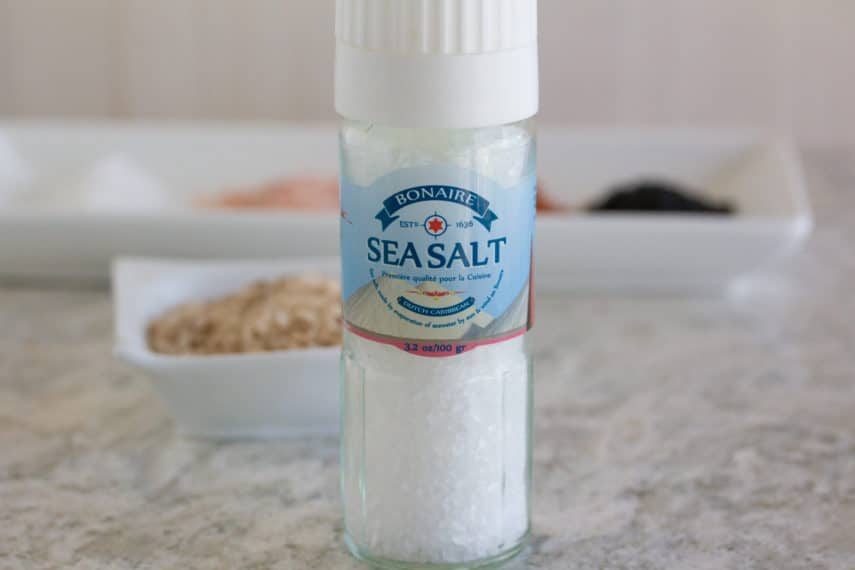About Salt
Monash does not have any specific serving size recommendations as of now.
Salt is Sodium Chloride. 1:1 sodium and chloride ions. Most salt that we buy to eat is almost 100% sodium chloride although some types will have a few percentage points of minerals or anti-caking agents.
Salt is one of those ingredients that you possibly take for granted. Perhaps you have a salt shaker on your dining room table and never give it much more thought. We are here to sing the praises of salt. Pretty much every dish – sweet and savory – is enhanced and improved with salt. When it comes to eating low FODMAP and eliminating other typical flavorful additions such as garlic and onions, salt becomes even more important.
There are many kinds of salt, just three of which you can see in our main image. (Left to right, finest to most coarse: table salt, Diamond Crystal Kosher Salt and Morton’s Kosher Salt). Immediately below you can see a rainbow of specialty salts discussed later in this article.
Where Does Salt Come From?
You might think all salt is sea salt, but that is far from the whole story. And where salt comes from will affect its flavor, which does extend beyond saltiness.
Sea salt is made by evaporating seawater and obviously comes from the oceans. Then there are land based salts, referred to as rock salts. You might be used to hearing the term “rock salt” in reference to the salt used to de-ice roads and indeed, it is a natural salt, but there are also artisanal culinary rock salts, such as pink Himalayan salt (see below).
And then, right here in the U.S., we have J.Q. Dickinson Salt Works, which is a 7th generation salt mining family that harvests its salt from an underground ocean trapped beneath the West Virginia mountains. The Iapetus Ocean, which predates the Atlantic, is free of contaminants and heavy metals that may be found in other bodies of water. They sun dry and hand-harvest the salt and package it with no preservatives or additives; it is a truly artisanal product. Is their salt ocean or land based? We think it is a bit of both as it is very much a product of its unique terroir. If this doesn’t get you excited about salt, then I don’t know what will! We love it as a Finishing Salt or to use anywhere we would kosher salt (see below).
How Salt is Made
Some generalizations can be made. Table salt is typically mined from underground deposits and is the most highly processed during which naturally occurring minerals are eliminated and then anti-caking agents are usually added, as is iodine to some.
Sea salts are typically produced through an evaporation process, with minimal processing, leaving trace minerals and elements intact. While sea based salts are sometimes heralded as healthier, they contain the same basic nutritional profile as table salt.
Cooking with Salt
In our FODMAP Everyday Test Kitchen we use kosher salt when cooking. I like the very pure flavor and its level of saltiness, but not every kosher salt is the same as you can see in our image below. The two most common brands in the U.S. are Morton’s in the dark blue box and Diamond in the red and white box. We use Diamond because I like the way it offers the coarseness and pure flavor of kosher salt, dissolves easily and the grains are also very irregular, which can add texture when I want it.
Morton’s is coarser and I find that it dissolves a bit less readily. As you can see below it also has a rounder shape. These differences might look minor, but in actual use, they act very differently from one another.
Baking with Salt
The Test Kitchen uses table salt for all of our baking recipes. I like un-iodized better but you can substitute iodized. Table salt measures very differently from kosher (see chart below) and you cannot directly substitute one for another.
Finishing Salt
Sometimes a dish comes alive with a sprinkle of finishing salt. These salts tend to be very large and often flaky as the idea is for them to remain distinct from the dish and add texture – a great salty crunch – as well as perhaps an extra visual dimension. Flaky Maldon salt from the UK is one of our favorites and there is a smoked version as well that adds a smoky depth to meats, vegetables and anything you use it with.
Specialty Salts
You can see in this image above that salt truly does come in a variety of colors, and this is just a small sampling. The black, russet colored and white salt in the image are from Hawaii. The russet/red colored one is referred to as Alaea salt and gets its color from the iron oxides in the red clay found on the islands.
The black Hawaiian salt gets its color from volcanic charcoal (or sometimes coconut shell charcoal, depending on brand), which supposedly adds antioxidant properties and enhances digestive health.
The pink salt is pink Himalayan, which is mined from ancient sea salt deposits from salt mines in Pakistan. You might have also seen thick slabs of pink salt used for cooking surfaces as well as decorative items, like candle holders. It is all the same salt!
The beige colored salt below (and above, far right) is Maldon Smoked Sea Salt Flakes, which is made from cold smoking Maldon Sea Salt Flakes.
Perhaps you have heard of Fleur de sel, which is French for “flower of salt”, and indeed it is possibly the most frequently mentioned and used specialty salt. It is hand harvested from the surface of salt ponds and the result is delicate and irregular white crystals that remain a bit moist and flaky. It traditionally hailed from Guérande in Brittany, but it is made elsewhere as well. Another French salt, Sel Gris or “grey salt”, is harvested from the bottoms of the same salt ponds as fleur de sel. It is a pale silvery grey and has a similar moist flaky texture.
How to Use
Always use the type of salt recommended in the recipe that you are making as they do not measure the same or have the same level of saltiness.
Size Matters!
In fact, if you measure 1 tablespoon of Morton’s and 1 tablespoon of Diamond the weight difference is significant. See our salt chart below. (Needless to say, you must be using calibrated, well-made measuring spoons).
Your results will vary depending on how you measure the salt. For instance, do you pour the salt into the spoon and shake it to a visual level? Or do you scoop the tablespoon into the salt container and level off with a straight edge tool? We use the later technique because this is the most precise and what we do in the Test Kitchen when testing recipes. We measured each salt 10 times to determine weights and used a calibrated digital scale.
Another way to look at the differences between table salt and kosher salts, which are the most commonly used, is this comparison by volume as that is how we typically use salt. These are the most commonly accepted comparisons:
1 teaspoon table salt = 1 ½ teaspoons Morton’s = 2 teaspoons Diamond Crystal kosher salt
 How to Store
How to Store
Salt should remain dry. Have you ever seen grains of rice in salt shakers? Those are added to absorb any excess moisture and to keep the salt free flowing. We use a bamboo saltbox in the Test Kitchen (as seen above), which keeps our kosher salt dry and accessible for measuring as well as grabbing with fingers and sprinkling. For our baking table salt we use an airtight Mason jar with a flip-top lid. You might have also heard about Salt Pigs and we love these, too. These are open, easy-to-access earthenware containers that keep the humidity low and your salt dry. If shopping for one, make sure that the interior is unglazed, as that is what helps modulate the moisture. (As an aside they make great host presents).
Find some of our favorite Salt Cellars or Pigs in our Shop.
Varieties
As you have already read, salt can come from land-based mines or evaporated from seawater. As with any agricultural product each salt’s essence is a result of its terroir and the flavors extend beyond just “salty”. We like to keep a variety on hand for various purposes and suggest that you try a few that might be new to you. I often bring salt home from wherever I am traveling, such as this salt below from Bonaire, which is obtained from what are considered some of the cleanest waters in the world.
And Finally, Measurements vs. No Measurements in FODMAP Everyday Recipes
You will see that where precision counts, such as in baking recipes, that we will give you exact amounts, such as 1 teaspoon, which is also designated to be table salt. In cooking our individual palates prevail and we will often list “kosher salt” in the ingredients and encourage you to salt to taste.
The reasoning for this is two-fold. First of all, we love food and we bet you do too. Part of that love is working with ingredients and discovering the wondrous alchemy that happens during cooking. The only way to become a better cook is to pay attention and experiment. I would even use the word “play”. Let your palate be your guide. And secondly, while we use Diamond Crystal Kosher Salt in the Test Kitchen you might use another kind and as you saw with the chart above, volumes of salt vary hugely. But don’t worry. Go forth and salt your food! It will all be fine.
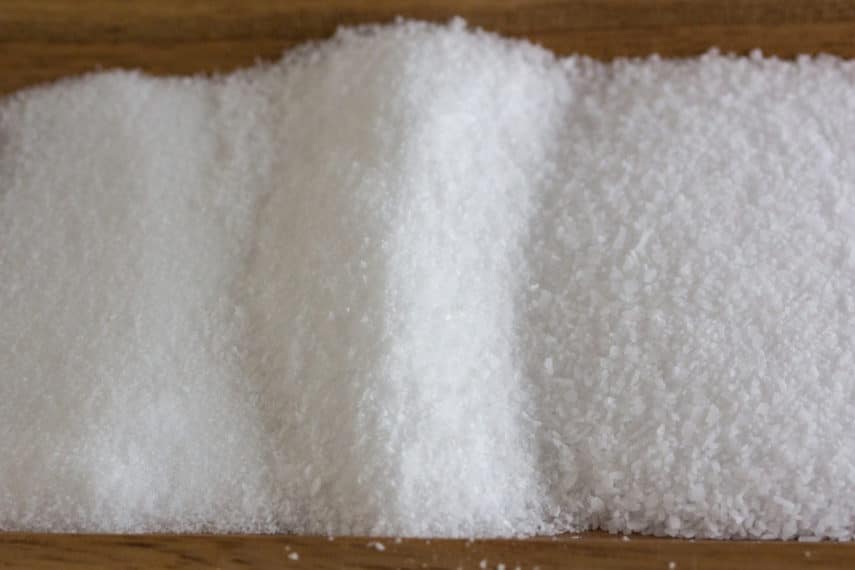
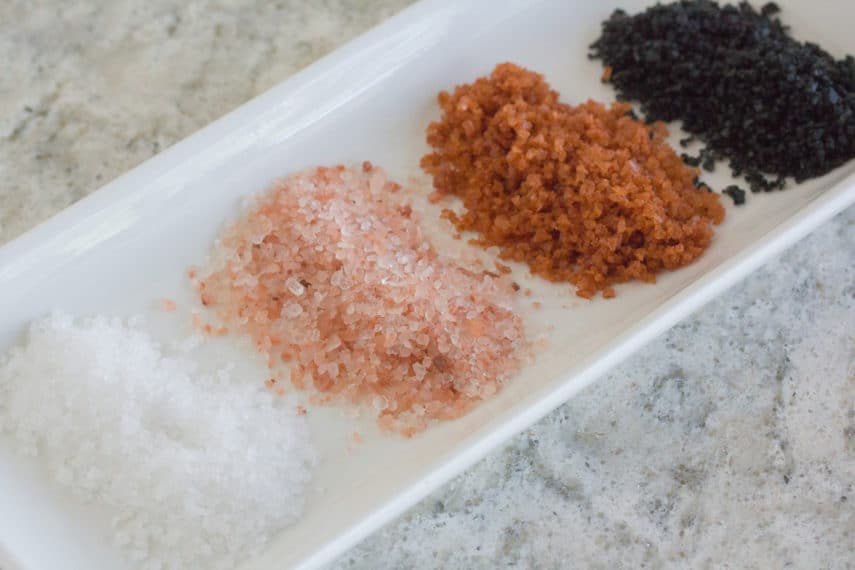
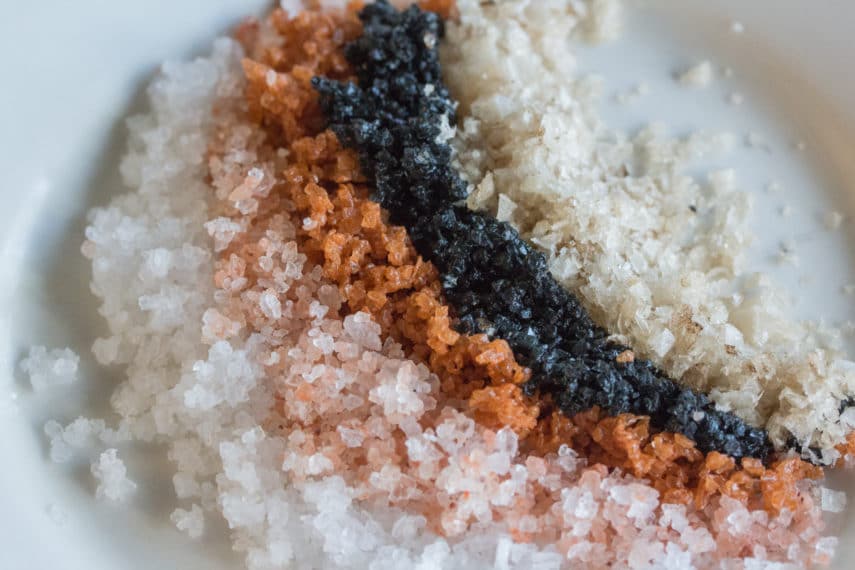
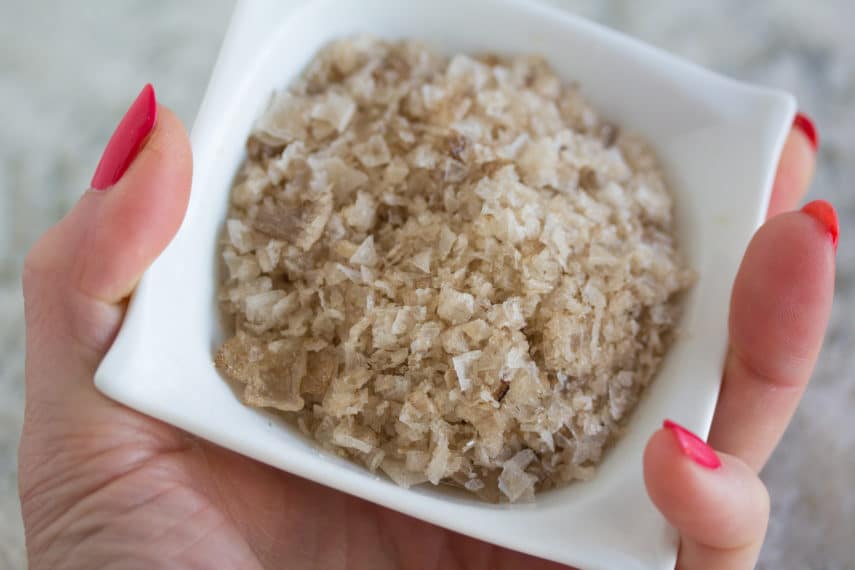
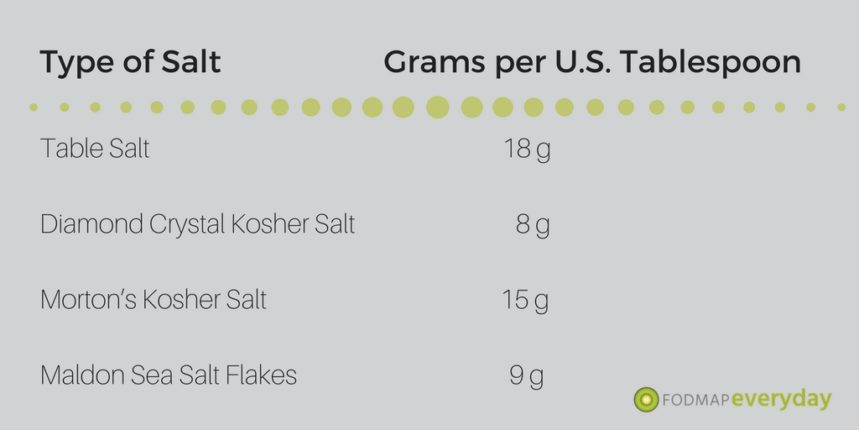
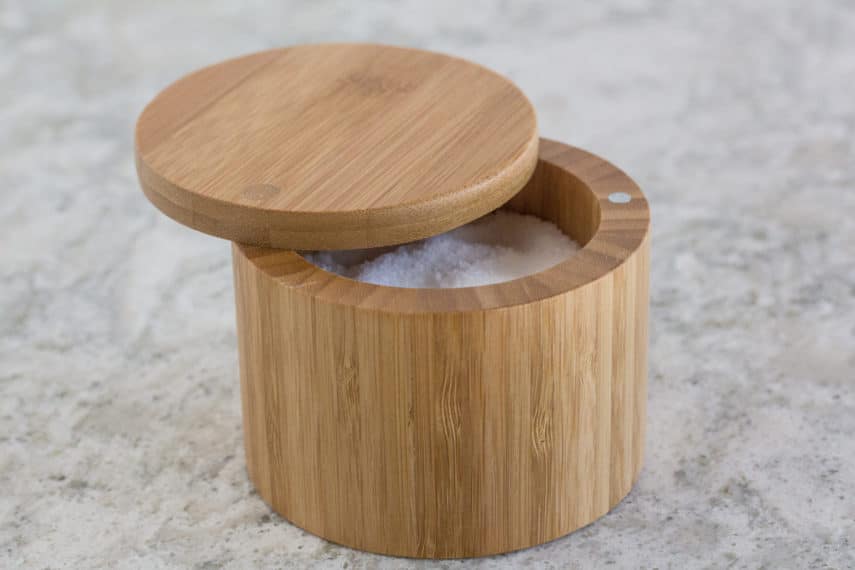 How to Store
How to Store